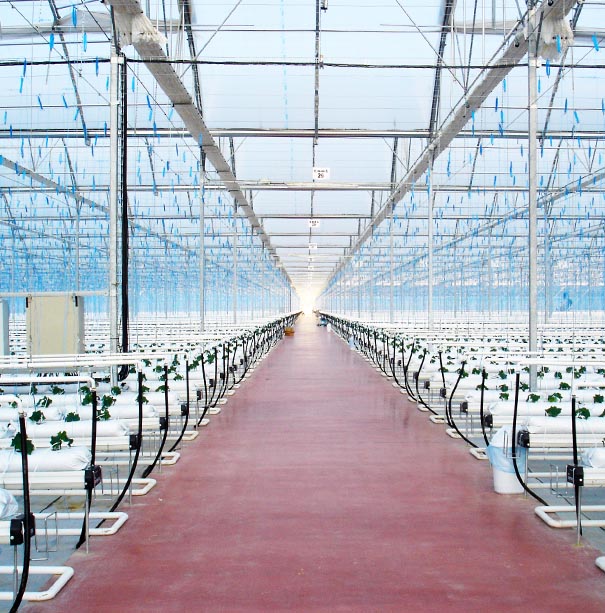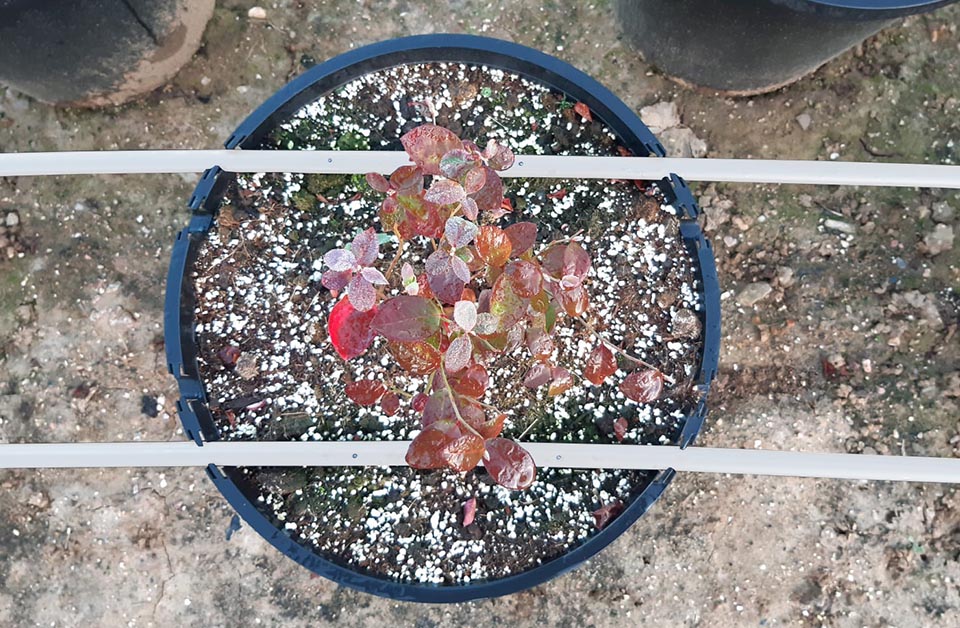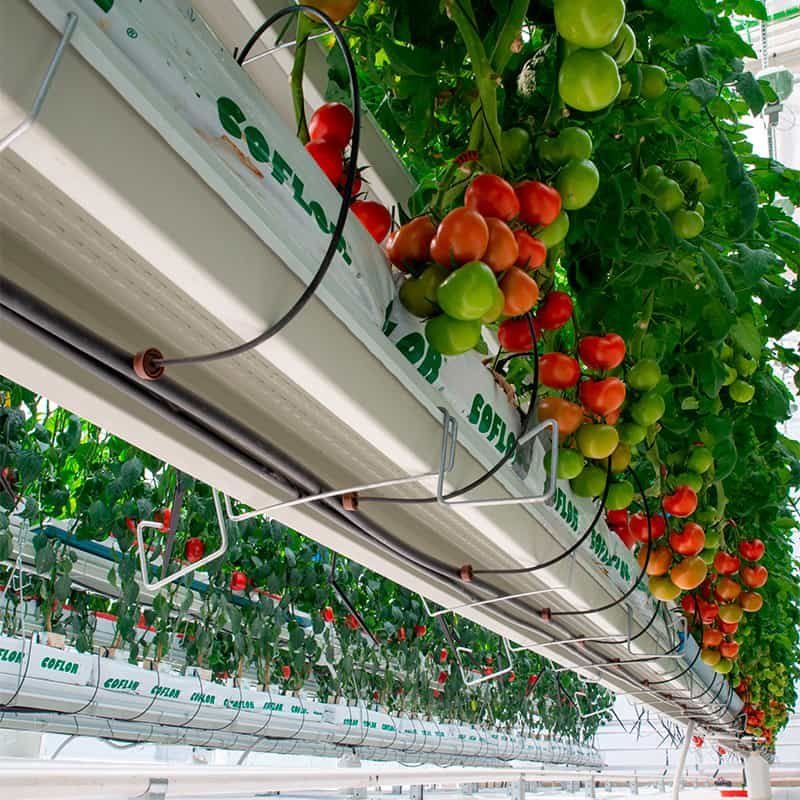

Soilless crops are all crops in which the plant develops its root system and completes its productive cycle in a confined and delimited medium other than soil. Within this type of cultivation we find water and substrate culture:

The advantages of the production of “soilless crops” are due to the following particularities of this growing medium:
The crop is usually grown under glass and at a higher planting density than when the crop is planted directly in the ground.
It enables cultivation in areas where soil characteristics are limiting factors or are not the most suitable.
It enables precise control of the growing medium conditions for absorption of the nutrient solution and optimal growth and regeneration of the root system.
It allows a higher, programmed, homogeneous production with the characteristics required by the market.
An optimum ratio between oxygenation and availability of the nutrient solution is obtained throughout the medium occupied by the root system, which improves crop development.
It optimises the consumption of nutrients and the water-energy binomial for plant development.

Nutrition: The small root development medium and the low or non-existent cation exchange capacity means that the crop is totally dependent on the supply of nutrients together with irrigation water. All the nutritional needs must be supplied through the irrigation system for the correct development of the crop in order to achieve the desired production objective.
Irrigation: All plants in the same irrigation area are exposed to the same climatic conditions. The roots of all plants have a medium for their development with the same characteristics and available volume. In order for plants to respond equally under identical exposure conditions, it is important that they all receive the same volumes of water and nutrients regardless of the duration of each watering cycle.
The volumes of water and nutrients supplied during each irrigation should be evenly distributed throughout the plant’s root volume. This requires that the drip points be well distributed and anchored to prevent them from being displaced by unforeseen circumstances or exposure.
Irrigation water temperature: The temperature values inside black micro-irrigation pipes are between 5-10°C above those of white pipes.
The dissolved oxygen content of water decreases with increasing temperature. The dissolved oxygen content in water at a temperature of 20°C is reduced by 10% when the temperature is increased to 25°C and by 20% when increased by another 5°C, reaching up to 30°C.
When this happens, the availability of oxygen to the plant in the root medium may be insufficient to maintain root activity, and fungal or bacterial diseases may appear more easily under these conditions.
Sustainability/Circular Farming: In order to guarantee the plant’s development, a quantity of water that exceeds the water retention capacity of the substrate must be provided, ensuring that the water reaches the entire volume of the substrate and that the ions not absorbed by the plant are drained. The quality of this drained water when discharged into the environment generates pollution problems and requires filtration and disinfection treatments for reuse.
Nutrition: AZUD QGROW nutrition equipment allows autonomous management of irrigation practices and precise nutrition. The automation of the fertigation process allows us to apply fertilisers with the desired frequency, nutritional balance and concentration in the irrigation water to achieve the desired production objective.
Irrigation: Our wide range of emitters, used for the supply of water and nutrients in soilless crops, allows you to select the most suitable emitter type, flow rate and configuration to achieve the desired production objective.
Irrigation water temperature: The two-layer pipe, manufactured by us, by means of the co-extrusion process, allows the use of different materials arranged in layers, a white outer layer and a black inner layer, thus allowing the functional advantages of each one to be exploited jointly:
The black inner layer prevents algae from growing inside the pipes as light cannot penetrate their interior.
The white outer layer prevents the temperature of the irrigation water inside from reaching critical values for the crop, as the white colour reflects a high percentage of the incident solar radiation.
The use of quality materials gives this pipe a high resistance/protection against direct UV radiation.
